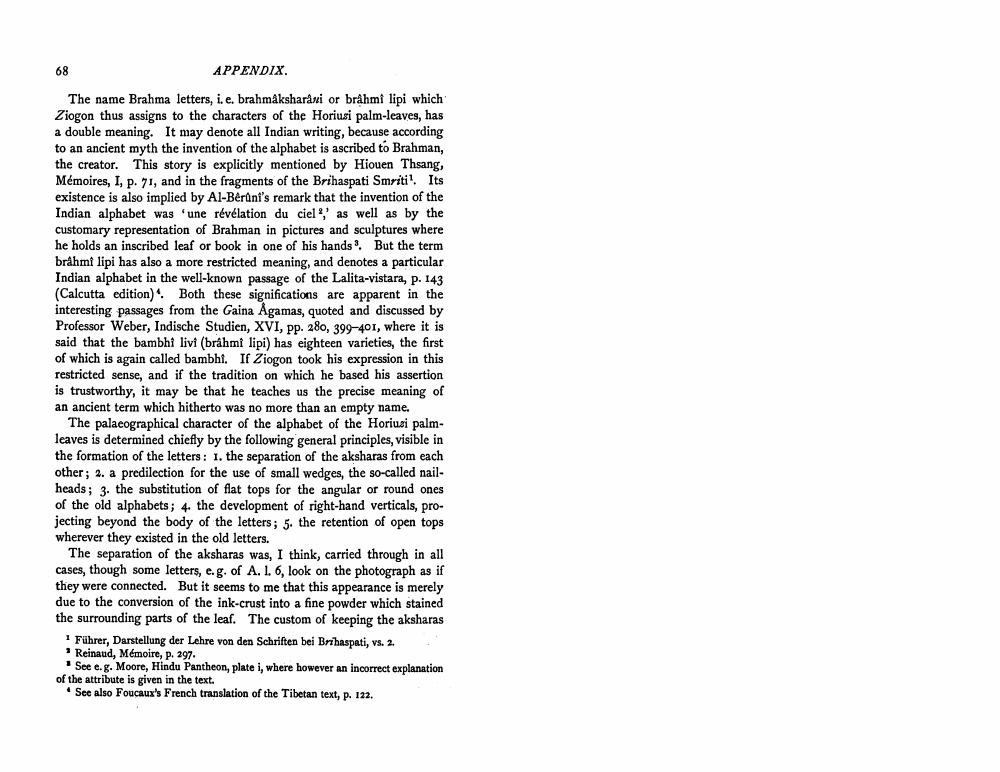Book Title: Palaeographical Remarks On Horiuzi Palmleaf MSS Author(s): G Buhler Publisher: G Buhler View full book textPage 5
________________ 68 APPENDIX The name Brahma letters, i.e. brahmaksharani or brâhmi lipi which Ziogon thus assigns to the characters of the Horiusi palm-leaves, has a double meaning. It may denote all Indian writing, because according to an ancient myth the invention of the alphabet is ascribed to Brahman, the creator. This story is explicitly mentioned by Hiouen Thsang, Mémoires, I, p. 71, and in the fragments of the Brihaspati Smriti! Its existence is also implied by Al-Berunt's remark that the invention of the Indian alphabet was 'une révélation du ciel as well as by the customary representation of Brahman in pictures and sculptures where he holds an inscribed leaf or book in one of his hands. But the term brahmi lipi has also a more restricted meaning, and denotes a particular Indian alphabet in the well-known passage of the Lalita-vistara, p. 143 (Calcutta edition) Both these significations are apparent in the interesting passages from the Gaina Agamas, quoted and discussed by Professor Weber, Indische Studien, XVI, pp. 280, 399-401, where it is said that the bambht livi (brahmi lipi) has eighteen varieties, the first of which is again called bambhi. If Ziogon took his expression in this restricted sense, and if the tradition on which he based his assertion is trustworthy, it may be that he teaches us the precise meaning of an ancient term which hitherto was no more than an empty name. The palacographical character of the alphabet of the Horiusi palmleaves is determined chiefly by the following general principles, visible in the formation of the letters: 1. the separation of the aksharas from each other; 2. a predilection for the use of small wedges, the so-called nailheads; 3. the substitution of flat tops for the angular or round ones of the old alphabets; 4. the development of right-hand verticals, projecting beyond the body of the letters; 5. the retention of open tops wherever they existed in the old letters. The separation of the aksharas was, I think, carried through in all cases, though some letters, e.g. of A. 1. 6, look on the photograph as if they were connected. But it seems to me that this appearance is merely due to the conversion of the ink-crust into a fine powder which stained the surrounding parts of the leaf. The custom of keeping the aksharas Führer, Darstellung der Lehre von den Schriften bei Brihaspati, vs. 2. Reinaud, Mémoire, p. 297. See e. g. Moore, Hindu Pantheon, plate i, where however an incorrect explanation of the attribute is given in the text. • See also Foucaux's French translation of the Tibetan text, p. 122.Page Navigation
1 ... 3 4 5 6 7 8 9 10 11 12 13 14 15 16 17 18 19 20
